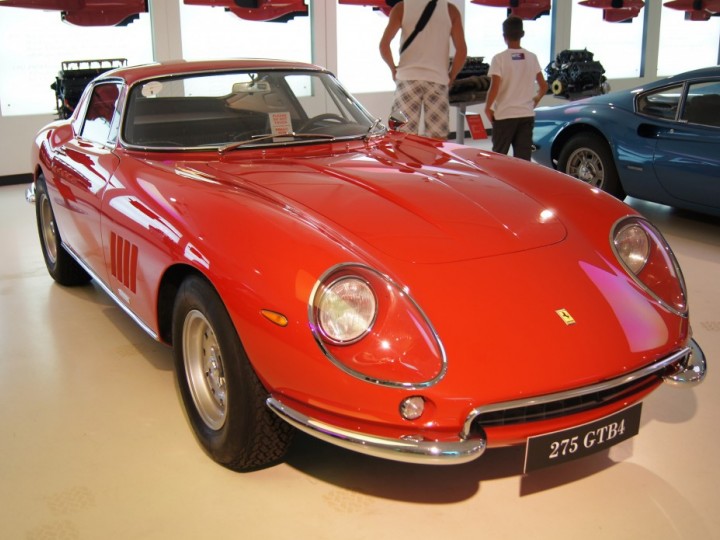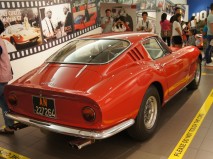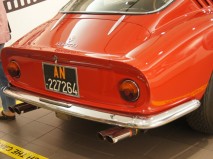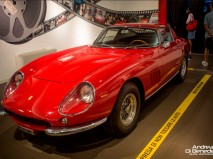1966 Ferrari 275 GTB4
Engine : 12V 60o
Total displacement - 3285 cc
Maximum Power - 280 bhp / 8000 rpm
en.wikipedia.org
The Ferrari 275 was a two-seat front-engined Gran Turismo automobile produced by Ferrari between 1964 and 1968. It used a 3.3 L (3286 cc) Colombo 60° V12 engine and produced 280-300 hp. The Pininfarina-designed body was a graceful evolution of the car's predecessor, the 250, and strongly contrasted with its replacement, the Daytona. The 275 introduced Ferrari to the "transaxle", where the transmission and rear axle are integrated.
Introduced at the Paris Motor Show in October 1966, the 275 GTB/4 (or 4-cam) was a substantially updated car; built by Scaglietti, it featured new bodywork and was the first Ferrari to not be offered with wire wheels.
Power came from a substantially reworked Colombo V12, still with two valves per cylinder but now with a four-cam engine and six carburettors as standard. In a departure from previous Ferrari designs, the valve angle was reduced three degrees to 54° for a more-compact head. The dual camshafts also allowed the valves to be aligned "correctly" (perpendicular to the camshaft) instead of offset as in the SOHC Ferraris. It was a dry-sump design with a huge 17 qt (16 L) capacity. The individual cylinder capacity remained unchanged at slightly under 275cc, which as before gave the model the first three digits of its name, and when multiplied by the number of cylinders equals 3,286cc total swept volume.
The transaxle was also redesigned. A torque tube connected the engine and transmission, rather than allowing them to float free on the body as before. This improved handling, noise, and vibration. Porsche synchronizers were also fitted for improved shifting and reliability.
The 275 GTB/4 could hit 165 mph (266 km/h) with its 300 hp (220 kW). 280 4-cam versions were produced through 1968.













